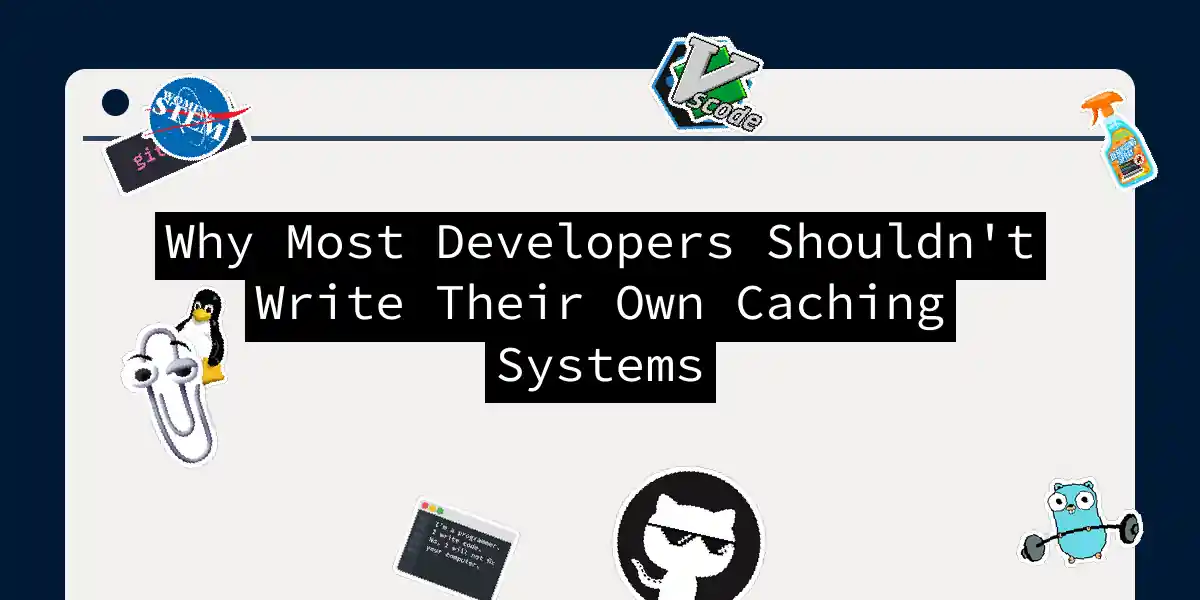The Allure and the Pitfall of Custom Caching
In the world of software development, the quest for performance is a never-ending saga. One of the most effective ways to boost the speed and responsiveness of your application is through caching. However, the temptation to roll out your own caching system can be a siren’s song, luring you into treacherous waters. Here’s why most developers should steer clear of writing their own caching systems.
The Complexity of Caching
Caching, at its core, seems simple: store frequently accessed data in a fast, easily accessible location to reduce the time it takes to retrieve it. However, this simplicity belies the complexity that arises when you scale up.
This flowchart illustrates the basic caching workflow, but it doesn’t show the myriad of edge cases and optimizations that a robust caching system must handle. For instance, how do you manage cache invalidation? How do you handle distributed caching across multiple nodes? These questions quickly escalate into a maze of complexity.
Redis: The Gold Standard
One of the most popular and widely used caching technologies is Redis. Redis is not just a caching layer; it’s a full-fledged data store that supports a variety of data structures such as strings, lists, sets, hashes, and more. It’s written in C/C++, ensuring high performance and consistency.
Redis also supports clustering, sharding, and replication, making it highly scalable and available. For real-time applications that require low latency and high throughput, Redis is often the go-to solution.
The Hazards of Custom Caching
When you decide to write your own caching system, you’re stepping into a minefield of potential issues:
Cache Invalidation
One of the most challenging aspects of caching is ensuring that the cache remains consistent with the underlying data source. This involves implementing strategies for cache invalidation, which can be complex and error-prone.
Distributed Caching
In a distributed environment, caching becomes even more complicated. You need to ensure that the cache is consistent across all nodes, which requires sophisticated synchronization mechanisms.
Performance Optimization
Optimizing cache performance involves tuning parameters such as cache size, expiration policies, and eviction strategies. Getting these settings wrong can lead to suboptimal performance or even cache thrashing.
Hazelcast: A Simpler Alternative
Hazelcast is another distributed caching solution that simplifies many of the complexities associated with custom caching. It automatically handles cache synchronization and invalidation, reducing the burden on developers.
Hazelcast also supports SQL-like queries, making it intuitive for developers familiar with SQL databases.
The Cost of Reinventing the Wheel
Developing a custom caching system is akin to reinventing the wheel. It’s a time-consuming and resource-intensive endeavor that diverts focus from the core functionality of your application. Here are some key reasons why you should avoid this path:
Time and Resources
Building a robust caching system requires significant time and resources. This effort could be better spent on developing the core features of your application.
Maintenance and Support
A custom caching system also means you’ll be responsible for its maintenance and support. This includes fixing bugs, optimizing performance, and ensuring compatibility with other components of your system.
Community Support
Using established caching technologies like Redis or Hazelcast gives you access to a large community of users and developers who can provide support, documentation, and pre-built solutions.
Conclusion
While the idea of writing your own caching system might seem appealing, it’s a path fraught with challenges. The complexity of caching, the need for distributed synchronization, and the ongoing maintenance requirements make it a daunting task.
Instead, leverage the power of established caching technologies like Redis or Hazelcast. These solutions have been battle-tested, are highly performant, and offer the scalability and reliability you need for your high-performance applications.
So, the next time you’re tempted to roll out your own caching system, remember: sometimes it’s better to let the experts handle the caching while you focus on what you do best – building amazing applications.
